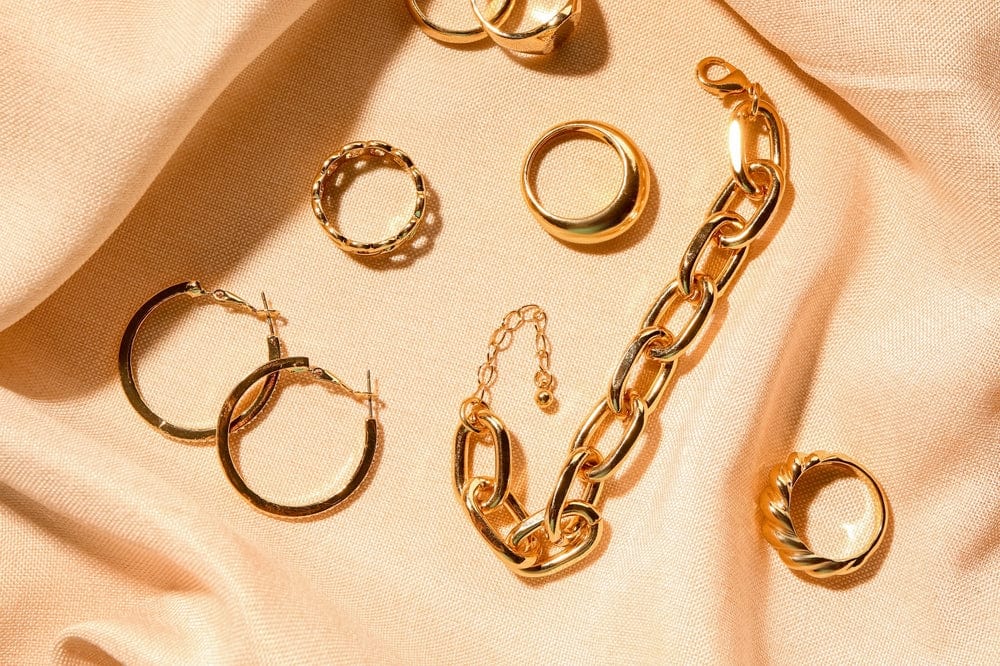Gold-Filled vs. Gold-Plated vs. Solid Gold: What’s the Difference?

When shopping for gold jewelry, it’s easy to get lost in the terminology—gold-filled, gold-plated, solid gold... they all sound similar, but the differences between them affect not only the price but also durability, value, and how your jewelry wears over time.
In this guide, we break down each type so you can make informed choices and pick the perfect piece for your lifestyle and budget.
What It Is:
Solid gold jewelry is made entirely of gold (or a gold alloy). It’s measured in karats (K)—with 24K being pure gold, and lower numbers (like 18K, 14K, or 10K) indicating the percentage of gold mixed with other metals for added strength.
For example:
- 24K = 100% gold (softest, richest color)
- 18K = 75% gold
- 14K = 58.3% gold
- 10K = 41.7% gold
Pros:
- Long-lasting and won’t tarnish
- Hypoallergenic (especially 18K+)
- High resale and investment value
Cons:
- Expensive
- Softer karats (like 24K) scratch easily
- Can be heavy for some designs
Best for: Heirloom pieces, wedding bands, investment jewelry

Gold-Filled (GF)
What It Is:
Gold-filled jewelry has a thick layer of solid gold mechanically bonded to a base metal (usually brass). By law, this layer must make up at least 5% of the item’s total weight—making it much more durable and higher quality than gold-plated pieces.
Pros:
- Looks like solid gold
- Much more affordable
- Doesn’t tarnish easily
- Can last decades with care
Cons:
- Slightly more expensive than gold-plated
- Limited options for very intricate designs
- Not considered "fine jewelry" legally
Best for: Everyday wear, affordable luxury, allergy-sensitive skin (if nickel-free)

Gold-Plated
What It Is:
Gold-plated jewelry is made by applying a very thin layer of gold (microns thick) over a base metal like brass or stainless steel using an electroplating process. The gold content is minimal—often less than 0.05% of the item's weight.
Pros:
- Extremely affordable
- Great for trying trendy styles
- Visually similar to solid gold (at first)
Cons:
- Gold layer can wear off quickly
- May tarnish or turn skin green
- Not hypoallergenic (depends on base metal)
- Requires gentle care and limited wear
Best for: Fashion jewelry, short-term or occasional use
Final Thoughts
Each type of gold jewelry serves a different purpose:
- Choose solid gold for timeless, lifelong investment pieces.
- Go for gold-filled if you want durability and elegance without the big price tag.
- Pick gold-plated for fun, trendy styles you won’t mind replacing.
The key is to match the type of gold to your budget, lifestyle, and how often you’ll wear it. With a little knowledge, your next gold purchase can be both beautiful and smart.
